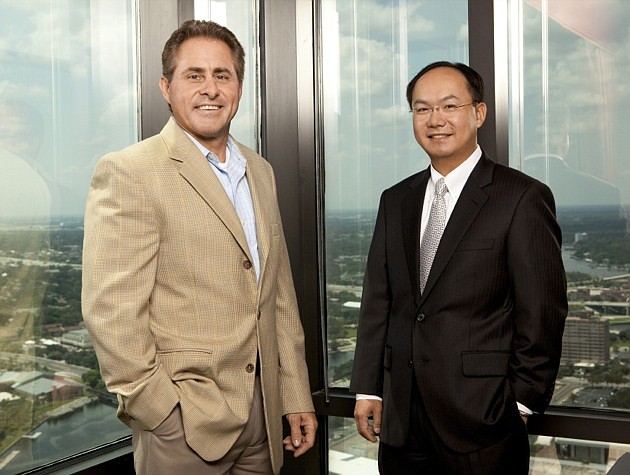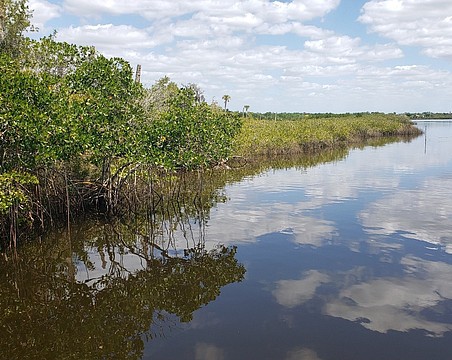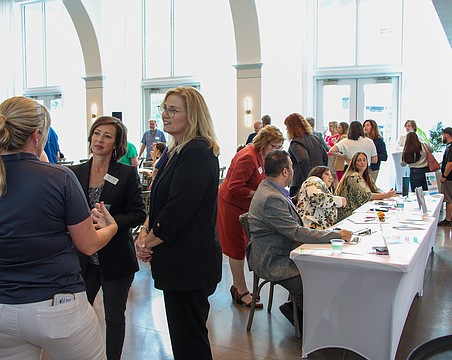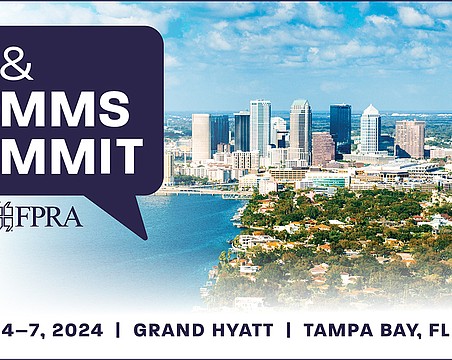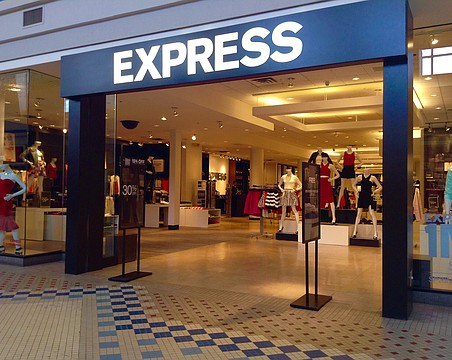REVIEW SUMMARY
What. EB-5: Foreign investors funding Gulf Coast jobs on the rise.
Issue. Portfolio model or single asset approach?
Impact. $1.5 billion investment and 31,000 jobs nationally.
The millions of dollars invested in Meres Town Center in Tarpon Springs, Tampa Festival on Hillsborough Avenue, and the Horizon Park shopping center at Hillsborough Avenue and Dale Mabry come courtesy of a Tampa firm's unique investment model.
Thanks to foreign investors taking part in a program that is the fastest way to get a U.S. green card, Atlantic American Partners offers a diversified mutual fund-like approach to put capital to work to create jobs.
“We have a track record of raising money and harvesting funds,” says Gar Lippincott, a partner with Atlantic American and managing principal of its Atlantic American Opportunities Fund LP. He describes it as an institutional-quality asset akin to a REIT — a real estate investment trust. “It's a diversified portfolio of commercial real estate that's managed by a private equity fund.”
But it's those jobs created from development projects, both directly and indirectly, that's kept the federal EB-5 (employment based) visa program alive for two decades, providing a welcome counter-punch against stubbornly high unemployment. The U.S. Citizenship and Immigration Service estimates it's led to $1.5 billion in investment creating 31,000 jobs.
It also allows foreign investors to obtain a conditional green card good for two years, which they can receive as quickly as a year instead of twice as long or more by conventional means. That work permit allows holders to work and live anywhere in the U.S. and to travel to their homeland without a visa.
It's conditional because the EB-5 regional center program requires proof of at least 10 jobs created for each $500,000 of investment. Once the job creation requirements are met, the green card becomes permanent. Only 10,000 green cards a year can be issued through the EB-5 program with 3,000 reserved for the regional center category.
“It's not the end-all-be-all or answer to everyone's capital needs,” says Roy Norton, director of the Siesta Key-based Florida Overseas Investment Center, an EB-5 regional center that teams with Atlantic American on some projects. Still, he adds, “It's certainly great for Florida and the economy to see the job creation take place in the current economic circumstance with no taxes.”
Passive investor's option
The “regional center” program, as it's known, comes with strings attached and a price: $500,000 plus additional administrative and legal expenses up to roughly $50,000. But that's a more affordable option than its sister, the EB-5 “general” program that requires a $1 million investment in a commercial enterprise requiring the investor to be involved in its management.
The less costly regional center program is designed for passive investors. With its lower investment threshold for entry and more flexible job creation criteria, it aims to jumpstart investment in the U.S.
Though projects must create at least 10 jobs for each $500,000 investment, indirect jobs created from businesses growing as a result of the project also count. Atlantic American's model calls for 20 total jobs per $500,000 investment, which provides extra cushion for investors, says Lippincott. A $2 million investment in the Tampa Festival project for a dialysis center building is expected to produce 20 direct jobs and 55 indirect jobs, he says.
The EB-5 also offers an expedited path to permanent residency and ultimately U.S. citizenship. For those with means, and perhaps a family looking to escape turmoil in its home country, or wanting a U.S. education, it's priceless.
“This is a great program,” says Norton, whose regional center operates statewide, and is one of 17 that have sprouted up around Florida during the past two decades. “This is an unusual public-private partnership. You create jobs, you introduce increased economic activity, you do so in areas that need it the most, and you do it without using any U.S. tax dollars.”
Norton's investment center counts as one of 147 in the U.S. Another 146 have applied for the status with U.S. Citizenship and Immigration Services. Together with his wife and business partner, Julie, they work with immigration attorneys and financial partners to recruit prospective investors and process two primary pieces of federal paperwork on their behalf.
“A lot of those regional centers are created as a vehicle to raise capital,” says Jason Liu, an immigration attorney and EB-5 expert with law firm Fowler White Boggs in its Tampa office. “The EB-5 investors are unique. They're mostly high-net individuals. They don't care about return on capital as long as they get their capital back,” he adds.
Portfolio vs. single asset
Liu's law firm works closely with Norton and Lippincott. Immigration attorneys at Fowler White Boggs are one source of referrals for Atlantic American. “We get investors a thousand different crazy ways,” says Lippincott, “but thank goodness for Google.”
The Opportunities Fund leverages capital from other sources, including a sister fund. The Community Reinvestment Partners Fund provides a form of bridge financing needed because a $500,000 investment may arrive in $50,000 monthly payments. Chinese investors, a major funding source, are limited by the Chinese government's $50,000 monthly cap.
Lippincott explains that his fund's approach is unlike most other traditional EB-5 investment structures where the regional center administrator is also the developer managing investments in a single-asset real estate project.
“We think we're unique,” says Lippincott, about the firm's 20-month-old initiative that's bringing in one or two investors a week. “We haven't found anybody yet that's doing what were' doing.”
He calls it “portfolio theory 101,” explaining, “We're diversifying the investor's money across multiple assets.” That way, he argues, there's less chance of an investor losing money.
The Atlantic American Opportunities Fund's assets range from grocery store-anchored shopping centers to medical office buildings. An adult congregate living facility in Orlando is in the pipeline too, says Lippincott.
The fund also diversifies geographically by investing in projects across the state rather than just one or two counties, as is the case for the Charlotte Harbor Regional Center. But locations are limited by a requirement that projects must be built in areas that have an unemployment rate that's at least 150% of the national average.
“Our model is different,” explains Lippincott, who was getting ready to host a group of seven Chinese investors recently. “We're the only ones that don't have that conflict of interest,” he adds, in reference to single-asset projects where the money manager is also the developer. “We're diversifying the investor's money across multiple assets.”
In contrast, the $40 million Charlotte Harbor Marina project managed by the Charlotte Harbor Regional Center is a local example of a single-asset project. And while it has been stalled, developer Allen Heise, president and CEO of the center, says he seeing renewed interest from foreign investors, particularly from Gangzhou, China.
The program particularly attracts high net worth business owners from China and India, according to Liu, who says that's in part because those countries do not have treaties in place with the U.S. that offer added avenues of entry into the country.
Heise traveled to an “Invest in America 2011 Summit” in Gangzhou in May to promote the project, and says it won an award as the best regional center and best EB-5 project out of about 50 regional centers.
“EB5 investors are looking for projects that will create jobs and provide a return of and on their investment,” writes Heise. “Our project was recognized by these attendees based on that criteria. They considered the Charlotte Harbor Regional Center to be the safest and best option.”
The development, now permitted after five years, is partly funded by $10 million in commitments from 20 foreign investors. It was first planned for 279 dry-dock boat slips plus restaurant, office and retail components.
Now, with the new popularity of the project, Heise has increased the number of slips to 410 and hopes to bring in 80 investors to raise the $40 million. He plans to break ground in January, or as soon as he has 30 to 40 subscribed investors, but that also depends on what the pipeline looks like for signing on the rest. Heise hopes to complete the project by December 2012.
In an email, Heise writes that he's meeting this month with a Chinese migration agency that represents as many as 60 EB-5 investors, and has a meeting scheduled for the group to meet in Tampa with officials from the U.S. Citizenship and Immigration Services. He also writes, “We will be traveling to Caracas, Venezuela, within the next three weeks for a week of meetings with potential investors. We are seeing a surge of investor interest from South America and Russia.”

